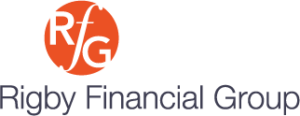SECURE 2.0 Enacted – Key Highlights

When we last wrote about the significant changes to retirement plans made by the Setting Every Community Up for Retirement Enhancement Act of 2019 (SECURE Act), SECURE 2.0 had already passed in the House of Representatives. SECURE 2.0 was enacted on December 29, 2022, as part of the Consolidated Appropriations Act of 2023.
There are significant changes in the new law – some key highlights include:
Required Minimum Distributions (RMDs):
The SECURE Act raised the age at which retirement plan participants (including IRA owners) were required to take distributions. SECURE 2.0 raises that age further – to 73 beginning the first of this year, and to 75 as of January 1, 2033. In addition, the penalty for failure to take an RMD, or to take distribution of a smaller amount than required (50% of the RMD amount not taken through December 31, 2022), has been cut in half to 25% beginning this year. For IRA owners, this penalty can drop to 10%, if the account owner subsequently takes the full RMD amount and files an amended tax return in timely fashion.
Increased Catch-up Contributions:
- Effective January 1, 2025, individuals between 60 and 63 will be allowed to make annual catch-up contributions up to $10,000 (currently $7,500 for all employees over 50) to an employer-sponsored plan. That amount will be indexed to inflation.
- The current catch-up contribution limit for IRAs is $1,000 annually. Beginning January 1, 2024, that amount will be indexed to inflation.
- Note that, for people earning over $145,000, catch-up contributions made to employer-sponsored plans must be made to Roth accounts in after-tax dollars, effective January 1, 2024.
Qualified Charitable Disbursements (QCDs):
SECURE 2.0 provides that, effective January 1, 2023, those over age 70½ can transfer up to $50,000 (adjusted for inflation) as a one-time gift to a charitable remainder unitrust, a charitable remainder annuity trust, or a charitable gift annuity. Such a transfer can be used to satisfy RMD requirements. But the transfer must be made directly from the IRA to the charitable vehicle by the applicable calendar year-end.
Changes to Roth Account Rules and Requirements:
SECURE 2.0 is heavy with changes to Roth account usage:
- 529 Plan Rollovers: the designated beneficiary of a 529 college savings plan account which has been established for at least 15 years can rollover up to $35,000, penalty-free, into a Roth IRA in their name. The $35,000 is a lifetime limit and annual rollovers are limited to the maximum IRA contribution limit for that year – and all IRA contributions in a given year are counted toward that limit. Contributions to the 529 plan account cannot be rolled over within the first 5 years following the contribution. These rollovers will not to be counted toward the beneficiary’s taxable income.
- RMDs have not been applied to Roth IRAs; this provision is established for Roth 401(k) plans as well under SECURE 2.0, as Roth 401(k)s had previously been excluded from that Roth benefit. This change is effective as of January 1, 2024.
- Catch-up Contributions: there is a significant change with regard to catch-up contributions for higher earners. ALL catch-up contributions for those above 50 who earn over $145,000 (this will be indexed for inflation) must be made to a Roth account – i.e., in after-tax dollars. To further complicate matters, unless a retirement plan allows for Roth catch-up contributions, no catch-up contributions can be made by any plan participant. This provision will apply to 401(k), 403(b), and 457 plans effective January 1, 2024.
- Employer Contributions – Optional Roth Treatment: previously, employer contributions to retirement plans could be made only in pre-tax dollars. SECURE 2.0 provides that plan sponsors can choose to offer matching contributions to Roth – or after-tax – accounts. Those employers who offer matching contributions based on an employee’s student loan payments may make these contributions to Roth accounts. All employer contributions to a Roth account will be 100% vested immediately. However, Roth account contributions by an employer will be included in the employee’s gross income for that year.
- SEP and SIMPLE IRAs: effective January 1 of this year, SEP and SIMPLE IRAs will be allowed to offer Roth options. Previously, contributions to these IRAs could only be made with pre-tax dollars.
The above are only a few highlights of SECURE 2.0 – and much guidance from the IRS will be needed. However, it is never too early to begin planning a strategy to take advantage of any potential benefits and mitigate against potential risks and downsides. We urge you to reach out to us – we are here for you, to devise a custom-tailored plan to meet your individual needs and goals.
Please click here to email us directly – we are here to help.
Until next time –
Peace,
Eric
